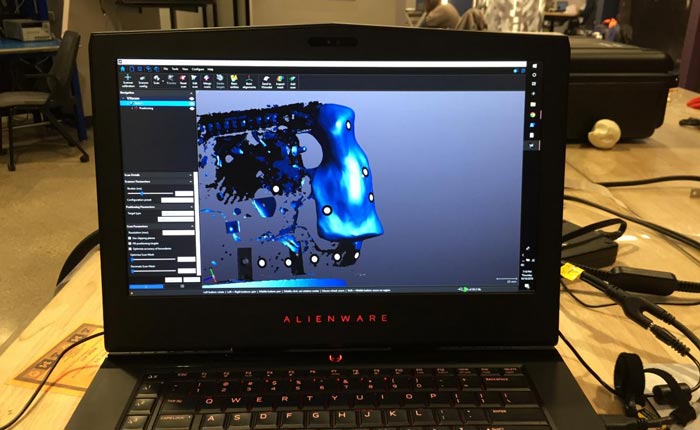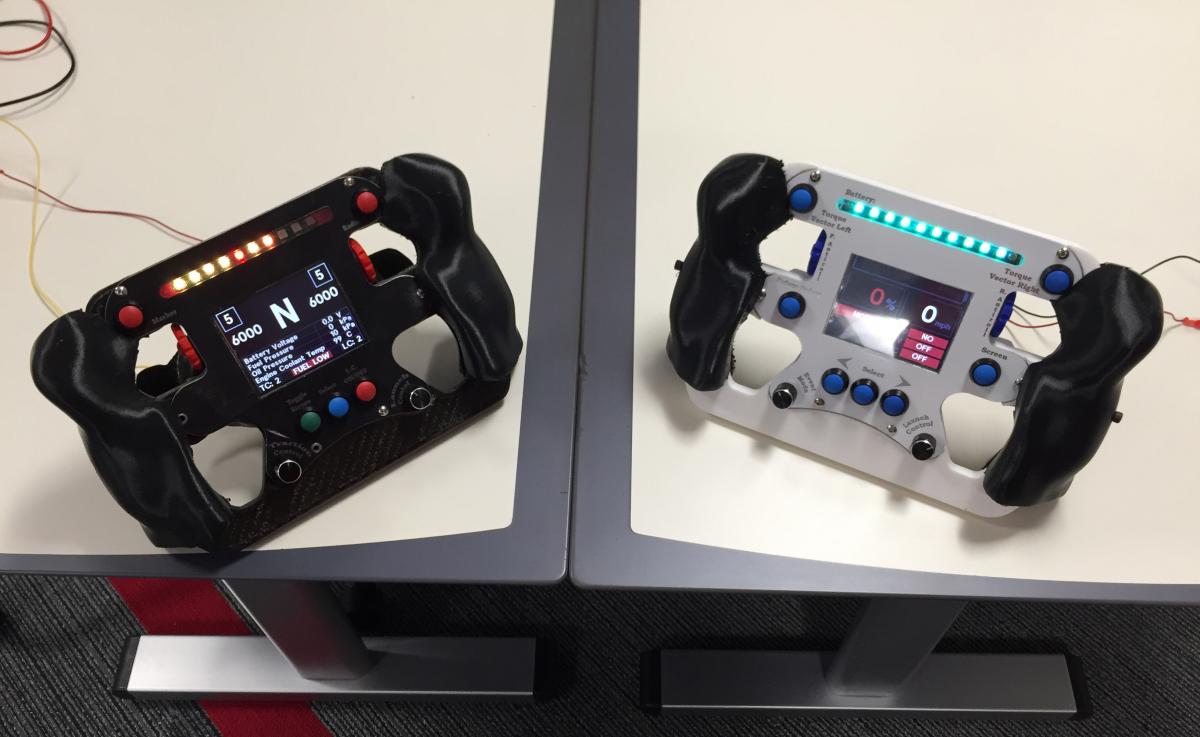Exit this form
Are you sure you want to quit this form?
The steering wheel is often seen as one of the most critical elements of a racing car because it commands the electronic shifting and anti-roll, selects the vehicle traction and launch control modes, and displays critical information to the driver. Simply put, without a working steering wheel, the vehicle cannot perform. Students tasked with designing a new, optimal steering wheel must be able to integrate a number of different engineering disciplines, including advanced embedded electronics, carbon fiber manufacturing, and SLA 3D printing.
The design of a steering wheel is often seen as one of the most complex projects for FSAE teams because it requires the management of multiple sub-teams, which can lengthen the design cycle due to too much external influence. Indeed, a chassis team generally manages the structure of the wheel, a composite team leads the fabrication, the drivers deal with the ergonomics, and an electrical team handles all internal electronics. Therefore, the difficulty of integrating all these systems together can generate conflicts between the sub-teams and even lead to the wheel’s failure; unless just one sub-team is dedicated to managing the entire project and assumes complete responsibility for the wheel’s completion while consulting senior members for input.
The tools needed for the design and manufacturing of the steering wheel must be easy to understand and work with, without the need for an extensive training. Plug-and-play tools and user-friendly interfaces facilitate future students’ understanding and help them discover improvements that they can add to the design.
To truly optimize ergonomics, drivers have the opportunity to sculpt their own grips from molding clay. These custom grips can then be scanned, processed, and printed using a flexible yet robust thermoplastic polyurethane (TPU). To do so, the design and manufacturing teams use fast, easy-to-use, and high-resolution portable 3D scanners.


Metrology-grade 3D scanners, such as the HandySCAN 3D or the Go!SCAN 3D, as well as the educational suite Creaform ACADEMIA are good examples of these fast, easy-to-use, high-resolution, and portable scanning solutions.
Not only was the steering wheel ready in time for the competition, but also time was saved during the design and manufacturing phases. 3D scanning technologies and additive manufacturing contributed to bringing the following benefits, which are essential to achieving the goals set by the FSAE team.
Wisconsin Racing is a collegiate engineering organization that competes internationally against 140 FSAE teams. Over the last 30 years, Wisconsin Racing has dominated the highest levels of this competition and produced a generation of outstanding engineers.
John Ryan, Electric Sub-team Leader and Steering Wheel Designer, depicts the contribution of Creaform 3D scanning solutions as follows: “Having access to a terrific scanning tool, such as the HandySCAN 3D, made it possible to create accurate, custom scans of the driver's ergonomic preferences. In my experience, driver satisfaction is a critical element in vehicle design. And, happy drivers yield faster lap times.“
The Makerspace, a Design and Innovation Lab in the College of Engineering at the University of Wisconsin—Madison, welcomes engineering students with various kinds of projects, such as the Wisconsin Racing team.
Since 3D scanners are mostly handled by students, Makerspace director Lennon Rodgers says their most important buying criteria were that the chosen technology be “really easy for the students to use and very mobile.”
The Makerspace is now equipped with a HandySCAN 3D, which set itself apart from the competition due to its “portability, resolution, speed, ease of using software, and industry standard hardware,” according to Rodgers. Actually, the team found that the portability and resolution they needed could ONLY be found with Creaform products.
You have a specific question. You need the advice of a specialist. We are here to guide you.